Are You Ready for a Genius Hour Classroom?
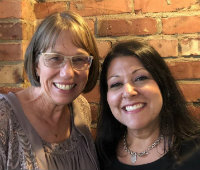
Genius Hour is an inquiry-driven, passion-based classroom strategy designed to excite and engage students through the unrestrained joy of learning. We (and many other Genius Hour teachers) accomplish this by setting aside time in our weekly classroom schedules when students are able to learn about and create whatever they want, unencumbered by teacher control.
We do Genius Hour in the classroom because human motivation does not come from the teacher telling students what they must learn and then rewarding them with smiley faces and good grades. Indeed, according to Daniel Pink and educational researchers like Alfie Kohn, rewards have an adverse effect on motivation, in school and at work.
Experienced teachers know that student motivation is enhanced when autonomy, purpose and mastery are present.
- Autonomy comes when students are entrusted with choice and the freedom to make decisions regarding their learning.
- Purpose arises when students have a reason for learning what they choose to learn.
- And mastery results when students are given enough time to actually master and become an expert on what they are learning.
These things are true for adults, and they’re true for children too.
In the model we’ve developed for our classes, students form their own inquiry questions based on their interests, wonders or passions. This is a form of teaching that we have been using since the 2011-2012 school year, and our students just love it!
Are they all geniuses? Find out why we call our special time “genius hour.” But you can call it what you want. Here are some of the many descriptions out there to designate time set aside for wonder.
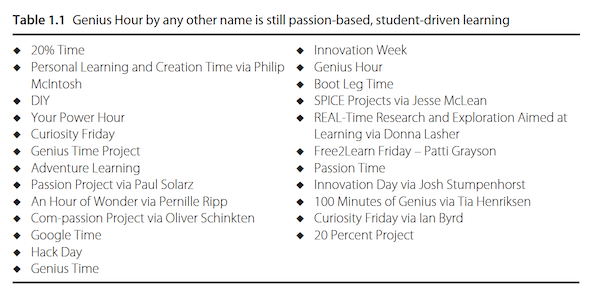
Really? 20% of our teaching time?!
We realize that an hour a week of “undirected” learning may seem extravagant and even intimidating to hard-pressed teachers who worry they’ll never catch up with all the curriculum and instruction they already have on their plates. But we believe as our teaching changes and the ownership of learning shifts more and more to the students themselves, we can accomplish all we have to do in new and better ways. Genius Hour is a sensible way to begin that transformation.
As lifelong learners we are always on the lookout for ways to improve our pedagogy and responsiveness to our students, and Genius Hour has just fit so well with the direction we have both been moving in our professional practice. Our emerging teaching philosophies have been inspired by so many great thinkers and educators, including:
- Sir Ken Robinson, whose famous Ted Talk Do Schools Kill Creativity? reminds us how important creativity in the classroom is.
- Daniel Pink, whose book Drive taught us that people are actually motivated by autonomy and purpose and not incentives.
- Angela Maiers, whose book The Passion-Based Classroom motivated us to incorporate more passion-based learning in our own classrooms.
Reading and listening to what these cutting edge thinkers have to say confirms why Genius Hour really makes sense. We are giving our students not only the chance to explore their passions but to find meaningful ways to make a difference in their world.
This precious 60 minutes of time has become the best part of our week, not to mention our students’. As one girl said in her ePortfolio reflection, “Genius Hour isn’t a subject. It is a gift.”
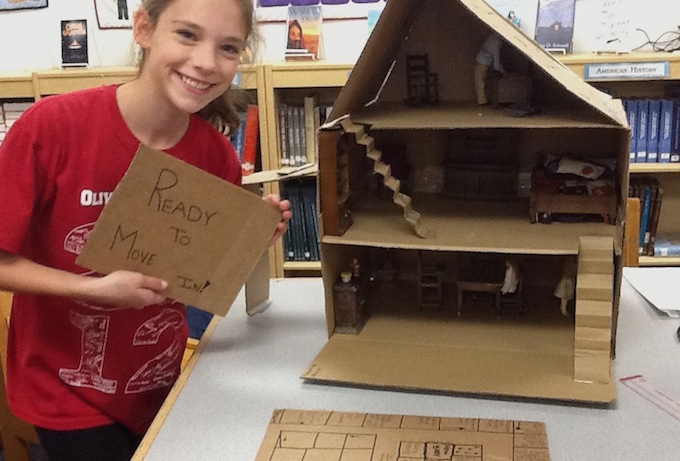
How Genius Hour works in our classrooms
Over the years we have found that it really pays off to introduce Genius Hour properly. This is a new way of learning for many of our students who are mostly used to being told how and what to learn.
For that reason, Genius Hour can be challenging for some kids in the beginning. So we feel it is important to give students the time to get used to the idea that they are being given unconditional freedom to learn what they want. We know from experience that it will take some students a couple rounds of Genius Hour to get comfortable with the idea of open inquiry.
We have several steps we take to get the students prepared. Here’s an infographic that Gallit developed to summarize our process:
First, we help students become inspired. We share the brain research about innovation and creativity. We show videos where other students have done something amazing. We read stories that challenge us to find and solve problems. We get outside. We wonder about how we can make a difference, create a new way, grow in an area, or fix something.
Second, we brainstorm ideas. What will we do with the time we have for Genius Hour? This is a time to challenge the students in a way that is new for many of them. What might you pursue? What do you want to get better at or find out about? No one is going to tell you. You have to think of something yourself.
This stage in the process (especially in the early days) requires a lot of talk and exploration. Some teachers do this using what Kevin Brookhouser calls “the Bad Idea Factory.” As teachers moderate, students churn out every single thing they can think of to do during Genius Hour. No holds barred – no idea too crazy. We write them all down as we honor the process of brainstorming. Then, as we comb through all the ideas in a more settled fashion, we know from experience that students will see which ideas are solid, which are really not workable, and which ideas still need development to become good Genius Hour projects.
from Joy Kirr’s blog – see the actual 7th grade “wonders” here.
Finally, students can create inquiry questions. This is where the teacher can help guide students as they develop a question that is full and rich and not answerable with a single Google search. Children need to be taught how to ask such questions, and the whole class can help too.
Wonder Walls are a great starting point. They can hold all kinds of questions, simple to complex. Some “wonders” will be the kind that a quick Google search will resolve, while others may become the foundation of a Genius Hour project. Here’s a fun way to help children create driving questions – a TubricTM (from the folks at the Buck Institute for Education – also see Tubric 2.0).
A few words about assessment: As our infographic suggests, self-reflection is an important aspect of the Genius Hour learning cycle. We would never think of applying traditional grading to Genius Hour activities and projects, but we do see this time as a great way to help students nurture the skill of metacognition – the ability to step back and observe their own effort, attitude and progress. We’ve found that our creativity rubric is a useful tool for kids at this stage.
Are you ready for Genius Hour?
We go into more detail about how to introduce Genius Hour in our new book, The Genius Hour Guidebook. You can find free resources and a place to connect with other teachers interested in Genius Hour at GeniusHourGuide.org.
All of this takes time. But the investment is so worth it. Our friend, 6th grade teacher and Genius Hour proponent Hugh McDonald, wrote this in his blog:
It is not enough anymore to say we are creating a generation of life-long learners if we are not embracing a change in our philosophy in schools to a more personalized inquiry driven model that connects a student’s learning to the world. Engage them and teach them how to learn and they will learn for a lifetime.” (hughtheteacher.wordpress.com).
We totally agree with Hugh, and we know that Genius Hour is a solid step in this direction!
ALSO SEE: Idea Starters for the Genius Hour Classroom
Credit: Thanks to our friend and “Afterword” writer Joy Kirr for several images in this post.
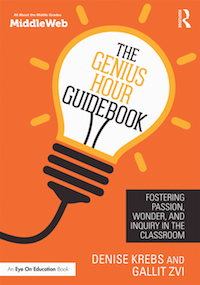

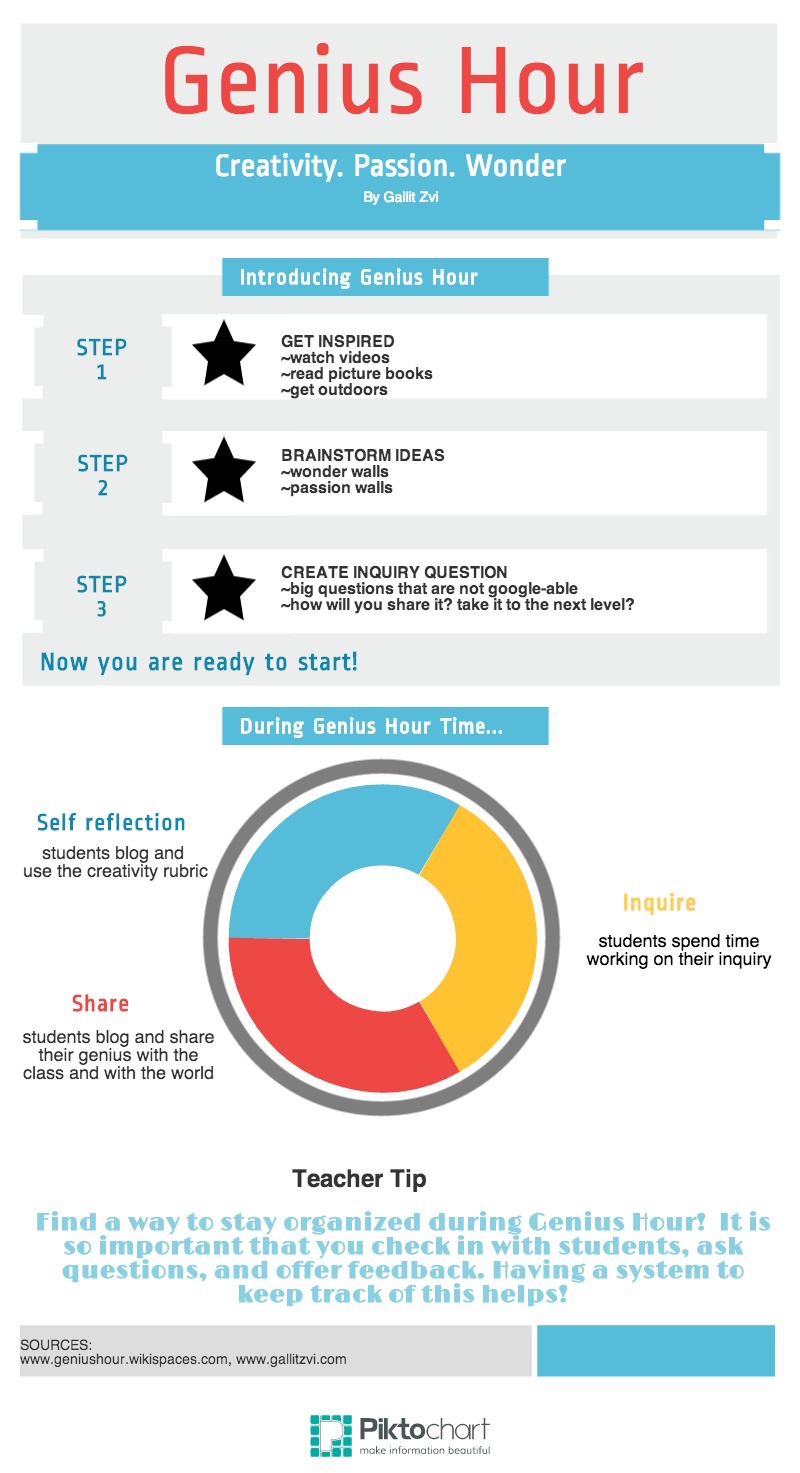
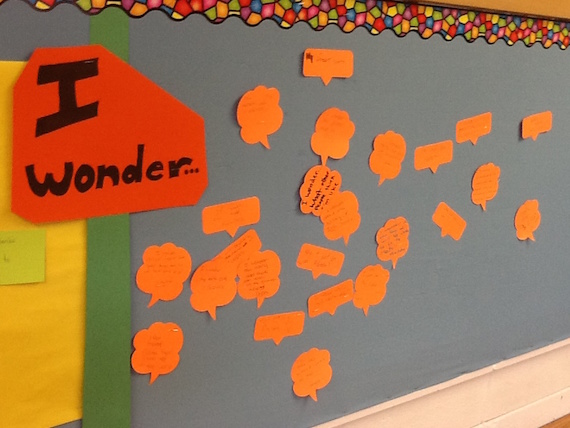






























Woot! Woot!! It’s about time!!! How exciting that soon your guidance will be in more teachers’ hands!
Yes! It’s very exciting for us, too, Joy! Thanks for the pics and afterword, kind comments, and especially for all your great work building this community. What would it be without your input? Blessings!
When is the book available? I was also wondering if there were any preview pages with any usable content? I see the dedication and about the author type pages, but would like to see some of the actual Genius Hour content. Thanks
Denise, Gallit and MiddleWeb have begun posting usable content at the book website, geniushourguide.org. The book is available at https://www.routledge.com/products/9781138937437 and can be pre-ordered at Amazon where it should go live any time.
Very Exciting to see this building momentum. This is year 4 for me and I would have to find different work without it! Autonomy, Creativity, Passion, Curiosity, Seeking Answers, what could be better than that? http://www.kiphistory.com/genius-hour.html